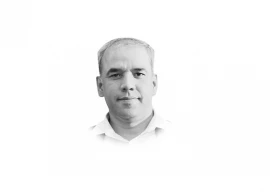
Philosopher and cognitive scientist David Chalmers coined the term “the hard problem of conscience”. He said, explaining the physical systems that give us the ability to discriminate, integrate information, report mental states, focus attention, etc. are the “easy problems” that may eventually be understood through standard scientific methods, but the “hard problem” will still not be answered.
Philosopher, cognitive scientist and acclaimed atheist Daniel Dennett conferred Chalmers with an even more interesting problem — the vitalist’s problem of ‘life’, that would mysteriously remain, even if the easy problems of reproduction, development, growth, metabolism, etc. would be finely ascertained. Dennett asserts that the “vitalist has got under the impression that being alive is something over and above all these subsidiary component phenomena” and that simply “the solution to all the easy problems amounts to a solution to the imagined hard problem”.
Dennett goes on to deny that the “problem of conscience” exists at all, denigrating the question as a “residual mystery”.
This plain denial by a line of realist philosophers who tend to eliminate the hard problem by simply saying that consciousness is an “illusion” — is in sharp contrast with an increasing awareness in the scientific community about the eventual subjective nature of all reality — something that leads to the opposite idea of panpsychism, the idea that all physical entities have minds.
The reasons for a resort to panpsychism are quite scientific, especially after the mindboggling findings of Quantum Physics that have confirmed an at-long-distance, faster than the speed of light, contact between elementary particles, akin to telepathy between previously entangled particles, without any physical medium acting between them. Findings in the realm of particle physics has led to the replacement of Bohr’s simple atomic model with a Standard Model that explains everything in the universe in terms of smaller-than-electrons elementary particles, a family of quarks, which combine to make electron, protons, etc. In addition, the Standard Model also explains the four known fundamental forces, the electromagnetic, weak, and strong interactions and the gravitational.
In light of the Standard Model, the quantum field theorisation pictures a universe of space-time, filled with quantum fields that act as a soup of fluctuations called ‘virtual particles’ that, created without any source of energy, are so brief that they are essentially immeasurable. And with the interactions of these fluctuations are created ‘disturbances’ that we call particles. Created by a field of spontaneous and briefly-lived virtual particles, the real ‘particles’ too are highly probabilistic, spontaneous and temporary.
And what connects this picture with conscience, is the ‘observer’s effect’ seen in the double-slit experiments, wherein the subatomic particles act differently when being observed and when not being observed — as if they are themselves conscious of the observer! If everything down to subatomic particles is conscious, then consciousness of the human mind must be an aggregate conscience of fluctuations in a densely situated location of neural cells.
So?
Is conscience just a normal side-effect of interacting matter? Is lifeless, thoughtless matter the real thing, and the awareness of life itself and of the conscious thought merely a ‘misfire of the imagination’ as Dennett would put it?
Panpsychism may very well be true, but it is not enough to explain why ‘life’ would sprout spontaneously, for instance in humans, with every conception in the womb, and why, in the vastness of the universe, there would accompany that same ‘life’ a super-conscience that would ceaselessly endeavour to understand the universe that made it spontaneously and purposely, in so many ways as are the numerous subjects of our knowledge-seeking. Why, if we, with the human mind, were simply the product of a fluctuating whole, within which every speck of a particle is conscious and knows its exact place and order in the vast universal field, are we then, the bearers of the super-conscience, so unaware of our place and order — as if banished from wholesome knowledge, yet in an unending strive to find it.
Painstakingly, in spite of the limitations of the neural system that facilitates only this much thinking at a time, the mind keeps on searching and scratching for more and more bits and pieces of knowledge, by combining old knowledge with the new, trying to complete the jigsaw puzzle of wholesome truth, yet always finding it incomplete and more intricate than previously thought. Why have we created tons of faculties in our universities, accumulated zettabytes of information, yet our thirst for knowing is the same as the first man’s, and our conscience urges us to think that we will, eventually, find the ‘theory of everything’.
The conscious thought’s awareness of itself and of other irreducible and undefinable realities like life, gravity, electromagnetism, force; and its awareness of larger-than-life concepts, that play no part in its survival as a species, like astronomy, astrophysics, the quantum field theory; and its abstract tools to explain the universe, like mathematics, religion and art; and its love and hate, its good and evil, and its truths and falsehoods — all these are certainly not explained by probabilistic fluctuation of an underlying scheme of elementary existence.
The intensity of our super-conscious thought is such that it keeps bouncing between emotions, memory, facts and fantasies. And its intricacies are such, that take it down to the depths of the quantum realm, and to the edge of the universe; and the qualia, that recognises a range of millions of colour shades, and millions of different sounds and voices — and yet at any instance the mind seems to be vacant and wondering!
Can all this be a ‘misfire of imagination’, an ‘illusion’? Can the very agent that is discovering and theorising more and more science, be an unreal, residual, confusion of existence? And will we, when we know more and more about the functioning of the neural axons and synapses, be knowing anything more about the convolutions and perplexities of the thought?
Common sense tells us that length is measured by lengths, weight by weights, and temperature by heat-units, so the thought will be measured only in thought-units — electrochemical waves traveling the neural circuits will only bring about an electrochemical change, which is essentially not a thought-unit. Like when you say that force = mass x acceleration, this is only a proportional relationship, it does not in any way mean that ‘force’ as an entity is made up of mass or acceleration, rather ‘force’ is another irreducible, undefinable fundamental entity, of which we are aware of only by the effect it has on other things.
Likewise, the conscious thought is a sublime matter of ideas, concepts, and qualia. It is fundamental, irreducible and undefinable; vital for life and essential for existence as we know it.
Published in The Express Tribune, December 11th, 2020.
Like Opinion & Editorial on Facebook, follow @ETOpEd on Twitter to receive all updates on all our daily pieces.













COMMENTS
Comments are moderated and generally will be posted if they are on-topic and not abusive.
For more information, please see our Comments FAQ